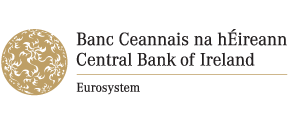For years, European regulators have been under pressure from corners of the ETF industry to follow the US in greenlighting non-transparent ETFs, however, without the significant tax advantage US ETFs enjoy, questions remain over potential demand for the structure.
It has been a standout year for ETFs across the globe highlighting the industry’s rapid development since the Global Financial Crisis in 2008. In Europe, exchange-traded products (ETPs) have been €62bn so far this year, according to data from Bloomberg Intelligence, and it has been a similar story in the US despite the challenging market environment.
One part of the market that has helped boost this growth in recent years is active ETFs which have seen 15% of total US ETF flows this year, according to data from Bloomberg.
Without the non-transparent model in Europe, active ETFs make up just 2% of the UCITS ETF market but this is growing as investors take advantage of not only the alpha on offer but also the growing number of outcome-orientated strategies focusing on areas such as thematics and income.
Highlighting this, global assets in active ETFs hit $324bn in June with the majority of assets going to fully transparent strategies, according to JP Morgan Asset Management.
The conventional wisdom is active ETFs either transparent or non-transparent are expected to drive a new wave of asset managers to the market as the structure allows active managers to enjoy the benefit of no longer having to reveal their ‘secret sauce’ on a daily basis.
Currently, ETFs in Europe are required to disclose their holdings daily, a process that has been in place since the launch of the first ETF this side of the pond in 2000, however, dialogue is currently ongoing with European regulators.
The key reason for this regulatory requirement is so authorised participants can have a full view of an ETF’s underlying holdings and price the strategy accordingly.
However, some parts of the industry argue this rule is outdated and has been a factor in holding back the growth of active ETFs, especially in the equity space where asset managers do not want to giveaway their best ideas to the rest of the market.
The tide is starting to shift among regulators as well. The Securities and Exchange Commission (SEC) gave the greenlight to non-transparent ETFs in 2019 which has driven many active fund houses to convert their mutual funds into ETFs.
This new innovation was first looked at by the Central Bank of Ireland (CBI) as part of its discussion paper on ETFs in 2017, however, the regulator made no changes to the requirements which was viewed by the market as a ‘wait and see’ move.
Earlier this year, however, the International Organisation of Securities Commissions (IOSCO) released its ETF good practices proposals to the industry which appeared to suggest the global watchdog is not wedded to daily disclosure requirements.
In particular, IOSCO encouraged regulators to ensure market participants have the right information to facilitate effective arbitrage but did not suggest the US’s move to greenlight non-transparent ETFs was an issue from a structure perspective.
Despite positive signs from regulators, it is unclear whether the non-transparent ETF structure would be significantly beneficial for investors in Europe.
Crucially, European ETF investors do not enjoy the same tax benefits over mutual funds compared to the US where “in kind” ETF creations do not incur capital gains tax, a crucial reason why asset managers have been converting mutual funds into ETFs stateside.
Furthermore, one of the most attractive aspects of ETFs is the transparency of the underlying holdings. While mutual funds only disclose their top 10 holdings at the end of each month, it has been a unique selling point for the ETF wrapper as daily disclosure provides an investor with clear insight into why their portfolio is behaving the way it is.
As Andrew Limbers, investment manager at Omba Advisory & Investments, told ETF Stream: “We still have the transparency requirements in place which is one of the most attractive things about ETFs.
“As ETFs have to disclose their holdings daily, we know exactly what we hold so on the fixed income side, for example, we can easily understand the yield, duration and credit risk of each strategy.”
Overall, it is likely the CBI will follow the lead of the US and greenlight non-transparent ETFs, especially given IOSCO’s ETF good practices, however, do not expect this to be a solution that is guaranteed to resonate with investors this side of the pond.
This article first appeared in Actives Unlocked: The ETF Advantage, an ETF Stream report in partnership with JP Morgan Asset Management. To access the full report, click here.
Related articles









